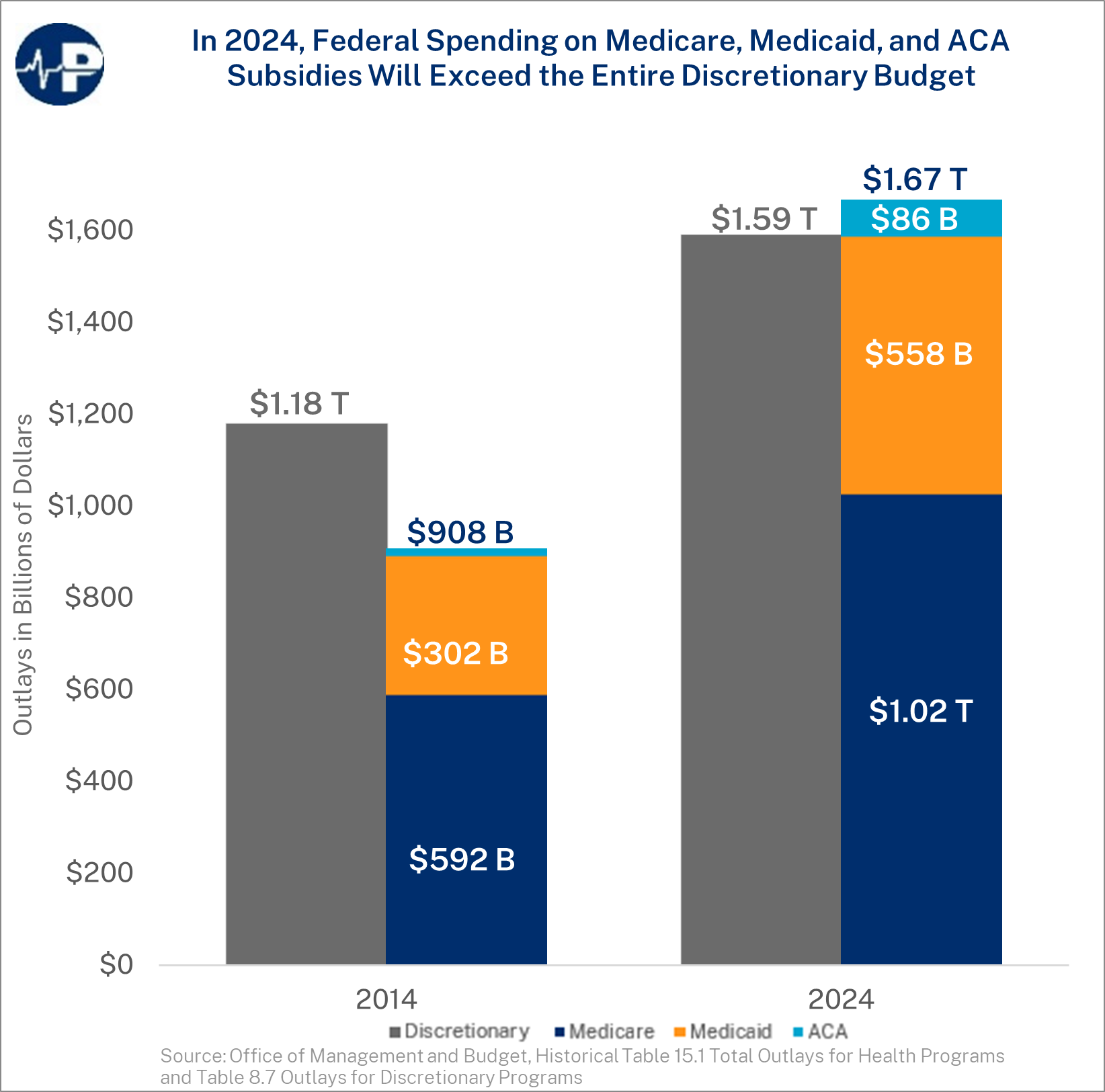While the discretionary budget dominates Congressional attention, the federal government is projected to spend more in 2024 on just three health care programs – Medicare, Medicaid, and Affordable Care Act (ACA) subsidies for insurance companies.
Last week, Congress passed another continuing resolution that will fund the federal government’s discretionary budget through the beginning of March. The stopgap measure is anticipated to give Congress time to craft a full year discretionary funding bill totaling $1.59 trillion for 2024, the top-line level announced by House Speaker Mike Johnson and Senate Majority Leader Chuck Schumer on January 8.
The discretionary budget funds many government agencies and programs. In theory, the annual process gives lawmakers the opportunity to annually scrutinize these programs and weigh their value against others demanding taxpayer resources.
Our largest health care programs are largely shielded from this annual process. Medicare, Medicaid, and ACA subsidies for insurance companies are mandatory programs that continue to be funded regardless of any new Congressional action.
In 2024, federal spending on these three programs is projected to be $1.67 trillion – more than the entire discretionary budget. Medicare alone is projected to spend more than $1 trillion in taxpayer dollars, larger than the entire defense budget.
Absent reform, the growth of our mandatory health programs, and the interest on the debt to finance them, will continue to grow at a pace that continues to crowd out spending on other federal priorities. Consider that just 10 years ago these programs totaled were 23 percent less than the entire discretionary budget.
At some point Congress will need to focus on where the money is. To avoid severe economic pain and a decline in American standard of living, policymakers must get serious about confronting the rising red ink from government health care programs. Last year, Paragon released a report identifying a series of reforms that would trim the growth rate of government health care programs and put them on a sustainable trajectory.
_______________________
This Pic was referenced by three different individuals during the Energy and Commerce Committee Health Subcommittee Hearing “Health Care Spending in the United States: Unsustainable for Patients, Employers, and Taxpayers” — Representative Diana Harshbarger (R-TN), Representative Dan Crenshaw (R-TX), and Benedic N. Ippolito of the American Enterprise Institute.
Hear their brief comments here:



